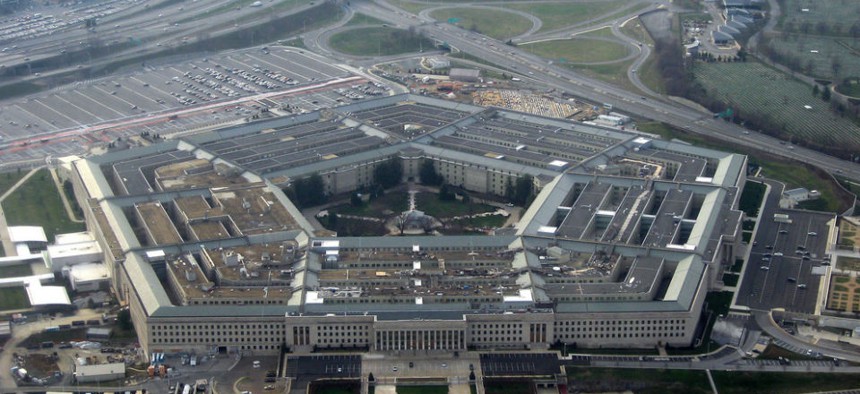
Flickr user David B. Gleason
Pentagon, Congress Face Stark Budget Choices
A new assessment shows a yawning gap between the Defense Department’s strategy and funding.
Despite some loosening of spending caps in the past year, Pentagon budget planners need to present Congress with some stark choices, an experienced specialist said on Thursday in releasing a new analysis of President Obama’s fiscal 2015 defense budget.
“We’re at a fork in the road,” said Todd Harrison, senior fellow at the Center for Strategic and Budgetary Assessments, noting a significant gap between the Defense Department’s likely future budgets and its long-term strategy described in the Pentagon’s 2012 guidance and reaffirmed in the 2014 Quadrennial Defense Review. Neither of those documents took into account the 2011 Budget Control Act’s since-modified spending caps, he said.
It’s not realistic to think Congress will accept the savings Obama proposed in his request for $560 billion as a base budget in 2015 ($495 billion of which is discretionary), according to Harrison. “Either the Pentagon should start submitting budgets that are fully resourced and show us the gap, or it should adjust the strategy to fit the budget, despite the threat environment,” he said.
Harrison’s study places the gap between the military’s budget and and what it says it needs at $200 billion to $300 billion. The impact of sequestration, he says, has caused a 12 percent drop in defense spending since 2010, which would total $1 trillion over 10 years if the law stays in place. “Congress should raise the caps or at lease allow the department some flexibility,” he told a reporters breakfast meeting.
Obama’s budget meets the Budget Control Act’s spending caps for 2015 but would exceed them by $116 billion over the next five years, Harrison said.
To the extent the Pentagon has been able to execute its national security strategy within the constraints, the analysis notes, the numbers show the Air Force gaining while the Army’s budget shrinks, a sign of the strategic choice of favoring air power and relying less on ground troops. The department’s spending priorities—a third of the budget covers pay and benefits, for example—reflect not a national security plan but a desire “to take care of our people,” Harrison said.
One example of the mismatch between the Pentagon’s plans and it’s budget is found in active-duty Army endstrength numbers. The 2014 QDR says the Army will be reduced to 440,000 to 450,000 troops, but the budget the Obama administration proposed for 2015 would fund an active duty force of only 420,000 troops, the smallest since 1959, Harrison found.
Obama’s proposals to save money by altering the “Tricare for Life” health benefit for military retirees and their families or launching a new round of base closings are not likely to gain traction in Congress, Harrison said. Obama has also proposed a modest 1 percent military pay raise, though the House panel proposed 1.8 percent.
Of all the defense budget components, procurement is most at risk, Harrison said, noting that the Pentagon has never budgeted for cost overruns. Much of the procurement rise in the past several years was paid for through the overseas contingency operations budget ($59 billion and falling), the analysis notes, pointing to declines in the coming years. The acquisition process “was largely a hollow build-up,” Harrison said, because weapons systems bought in the 1980s need to be replaced, while newer investments have either failed (as in Army ground vehicles) or been cut back (as with the F-22 raptor stealth fighter).
“The elephant in the room is the F-35” joint strike fighter, he added, which at a total long-term cost of $351 billion for aircraft and engines far outdistances the second highest category, which is Ballistic Missile Defense Systems. “It has a big target on it, but because many of its overruns are past, it possibly now has stable funding,” he said.
Harrison advised against putting hopes for savings on acquisition reform. “We’ve been trying that for decades. It’s compensation reform that would free up funding, and it would not take effect for 10 years because it would apply only to new recruits,” he said. Base closings, which could yield long-term gains, would require up-front costs, he said.
“Pentagon people are legitimately worried about readiness,” Harrison said, noting that depot maintenance and trainee flying hours are currently below requirements. “Readiness is worse than we think” because evaluators tend to measure inputs, such as flying hours, rather than the more difficult outputs, such as performance in combat situations, he said.
The “crunch time” for defense spending will come in the 2020s because “we didn’t recapitalize in the 2000s,” he said. Congress could require the military to find more innovative ways to conduct operations or shed some U.S. responsibilities, he added. “We’d be telling our allies, we said we had your back but now we don’t have your back.” More tolerable, he said would be to retire some weapons systems.
Harrison emphasized that the defense cuts under the Budget Control Act “had nothing to do with defense or a change in national security strategy, but were about the deficit and not breeching the debt ceiling. Both parties took the defense budget as hostage, and it hasn’t turned out well for the hostage.”
(Image via Flickr user David B. Gleason)







